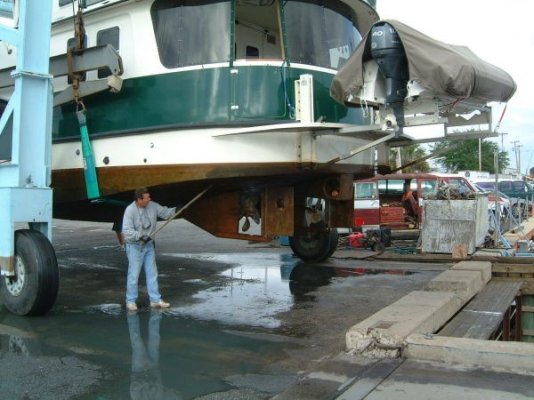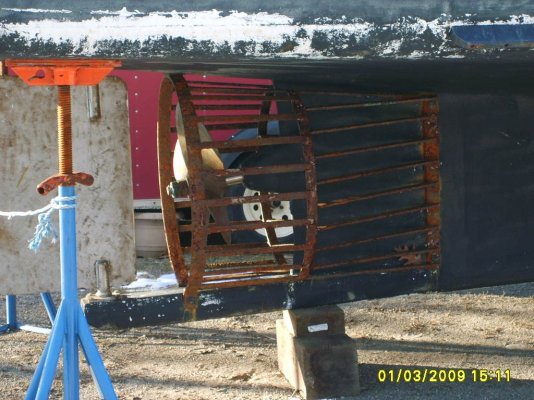COCG47
Member
- Joined
- Sep 14, 2010
- Messages
- 13
This past weekend, I was merrily cruising up the ICW between the Treasure Island and Madeira Beach Causeways participating in a Veterans Day Boat Parade in west central FL when I hit some kind of submerged obstruction.* No idea what it was, but I suspect possibly a waterlogged piling that had broken loose.**All I got was a loud bang, and then excess vibrations in my starboard shaft.* I limped back to my slip and dove on the boat, and found three of four blades on my starboard prop severely damaged.* Two had about 1.5 inches of the blade tip completely sheered off, and one was ripped and curled over.
I was in the center of the channel in about 10 ft of water, going about 10 kts, and I didn't see anything either before or after the impact.* Chart didn't show anything like submerged piles or anything, so I'm assuming it was a large piece of flotsam.* Two questions:
1.* Should I contact the USCG or Army Corps of Engineers or anyone else in case this is some kind of uncharted obstruction and not just flotsam?* As I said, I doubt it was any kind of permanent obstruction because the waterway is heavily travelled, and I was almost directly on my track from earlier in the AM.
2.* Does anyone have any thoughts on whether it would be worthwhile or effective to install some kind of propellor guard?* The boat is a Jefferson 46 with a semi-displacement hull.* One of my concerns when I bought the boat was how exposed the props and rudders were, and the fact that they are the lowest appendage on the boat when underway, and I have been pondering this question for a while.* This incident has now brought it to the fore in my mind.* My thought would be something made of tubular construction, a few inches larger than the propellor diameter, that would surround the propellor, with a bar that went forward and attached to the hull forward of the shaft that would serve to deflect any flotsam that I ran over.* It could even have a bar that went aft to the tip of the rudder to form a sort of skeg to provide additional support to the rudder.* Only major drawback I can see, and it's a big one, is if something got lodged in the guard where it could trash my transmission or engine if the key didn't shear quickly...
Looking forward to the opinions of this august group of experts!* Thanks.
Glenn
CAPT Glenn Zeiders, USN
M/V SYREN
Jefferson 46
I was in the center of the channel in about 10 ft of water, going about 10 kts, and I didn't see anything either before or after the impact.* Chart didn't show anything like submerged piles or anything, so I'm assuming it was a large piece of flotsam.* Two questions:
1.* Should I contact the USCG or Army Corps of Engineers or anyone else in case this is some kind of uncharted obstruction and not just flotsam?* As I said, I doubt it was any kind of permanent obstruction because the waterway is heavily travelled, and I was almost directly on my track from earlier in the AM.
2.* Does anyone have any thoughts on whether it would be worthwhile or effective to install some kind of propellor guard?* The boat is a Jefferson 46 with a semi-displacement hull.* One of my concerns when I bought the boat was how exposed the props and rudders were, and the fact that they are the lowest appendage on the boat when underway, and I have been pondering this question for a while.* This incident has now brought it to the fore in my mind.* My thought would be something made of tubular construction, a few inches larger than the propellor diameter, that would surround the propellor, with a bar that went forward and attached to the hull forward of the shaft that would serve to deflect any flotsam that I ran over.* It could even have a bar that went aft to the tip of the rudder to form a sort of skeg to provide additional support to the rudder.* Only major drawback I can see, and it's a big one, is if something got lodged in the guard where it could trash my transmission or engine if the key didn't shear quickly...
Looking forward to the opinions of this august group of experts!* Thanks.
Glenn
CAPT Glenn Zeiders, USN
M/V SYREN
Jefferson 46


